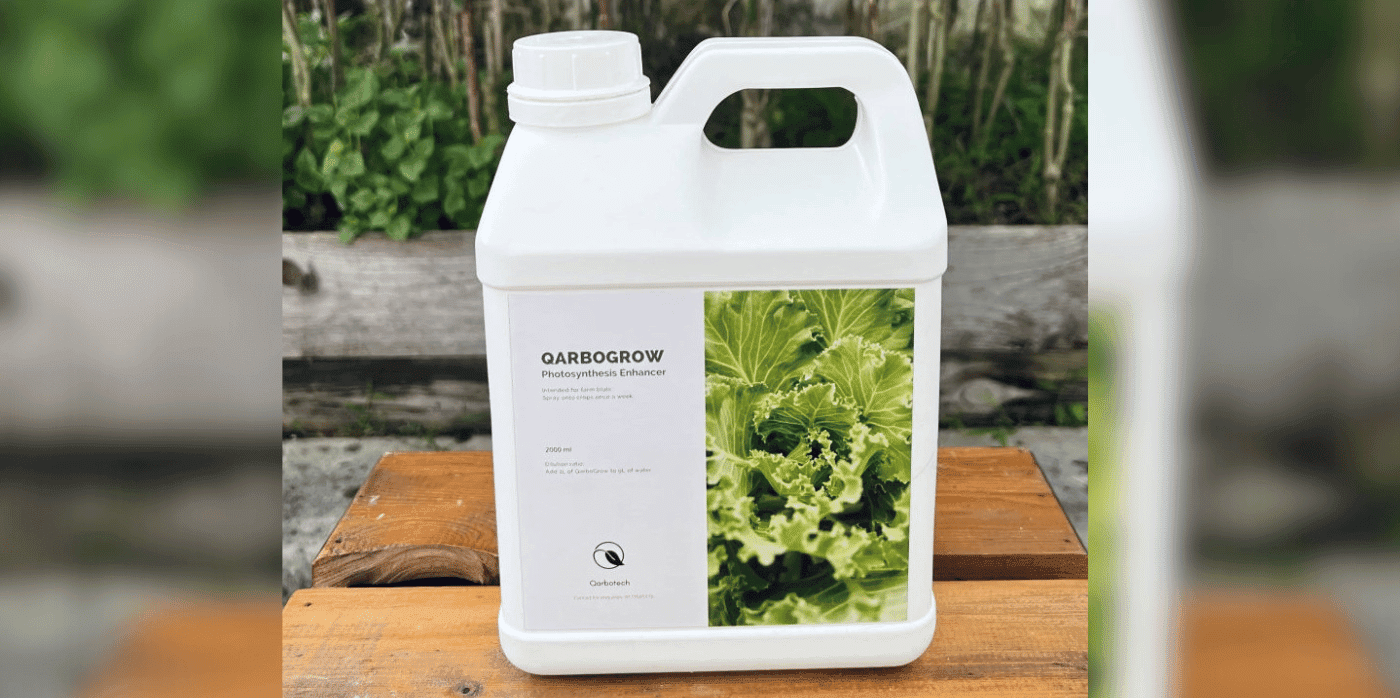
Spotted: Plant photosynthesis is limited by the amount of CO2, light intensity, and temperature. Plants typically convert just two to four per cent of available energy in radiation into new plant growth. This low efficiency has led to attempts to genetically alter plants to make them more efficient, which has provoked concerns over the associated risks to food security.
However, Malaysia-based agritech startup Qarbotech claims that its new product, QarboGrow, can enhance photosynthesis without resorting to genetic modification. It does this through the use of organic compounds with properties similar to chlorophyll. The startup’s product, QarboGrow, is sprayed onto crops, where it penetrates the leaf’s surface and interacts with chloroplasts. This interaction promotes greater energy transfer, helping to boost the rate of photosynthesis within a plant.
Qarbotech claims its nanotechnology-based solution can be used in-soil or on-plant, and can enhance the photosynthesis rate of plants by 30 per cent. This translates to a 30 per cent increase in plant growth, a 25 per cent reduction in crop growth cycles, and a 20 per cent increase in the sweetness of fruits.
The company recently announced that it has raised $700,000 (around €640,000) in seed funding, grants, and awards. Qarbotech will use the funding to strengthen research and development and expand its manufacturing facility to produce up to 50 times its current capacity.
Climate change and the growing global population are spurring a host of innovations aimed at improving agriculture. Recent developments that Springwise has spotted include a plan to make regenerative farming easier and cheaper to adopt and using bespoke bio-inoculants to improve soil health and reduce fertiliser use.
Written By: Lisa Magloff

